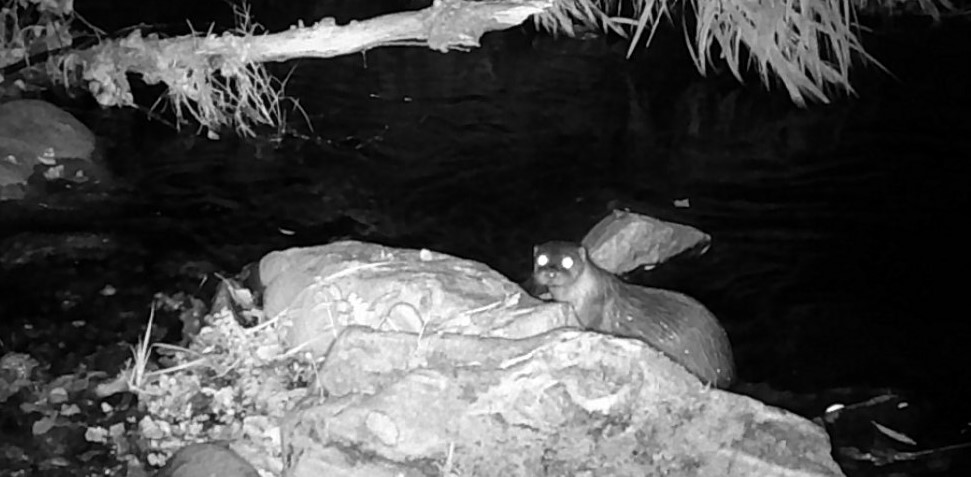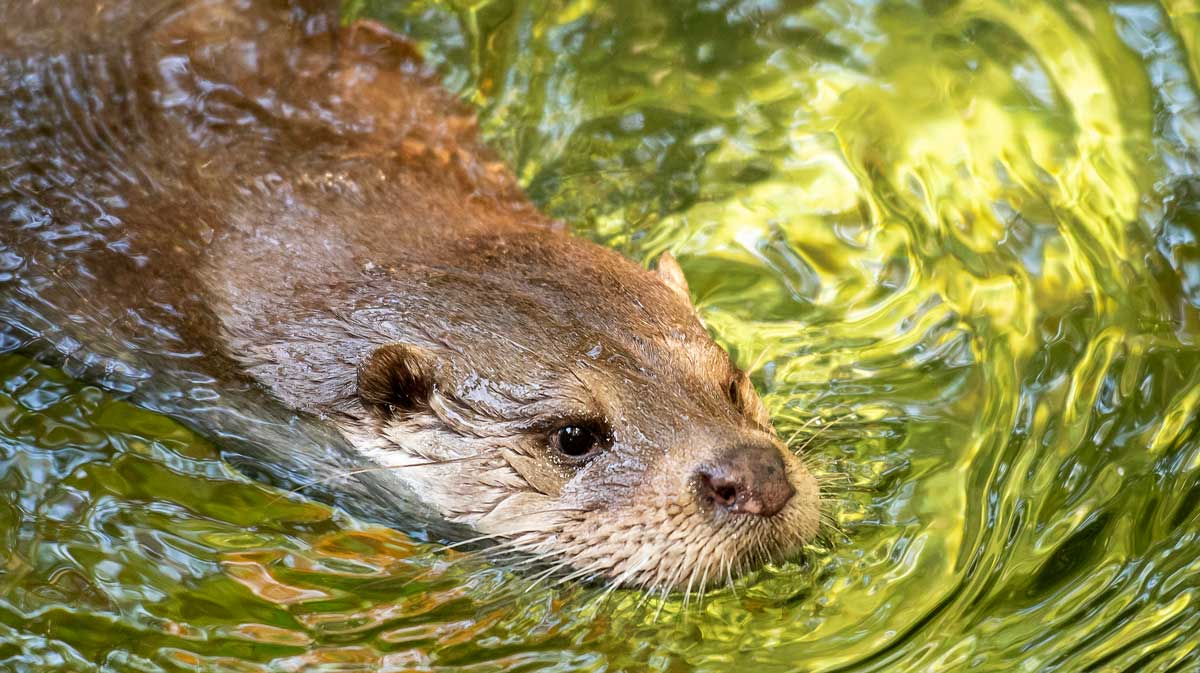Otters have reproduced in the Mogent river for the first time in more than four decades. This is confirmed by the images recorded with the camera traps installed as part of the “Otter Monitoring and Study Project in the Besòs and Tordera Basins” which is being carried out by the Observatori RIVUS, part of the Fundació RIVUS, and the Barcelona Zoo Foundation, with the support of the Catalan Ministry of Climate Action, Food and Rural Agenda.
The new family group is composed of a female and two pups, born in the summer, who now venture out on a daily basis accompanied by their mother. This will continue until they are about a year old, which is the average age for this species to leave their mother and make their own home.
In recent years, individuals of this species have been detected from time to time in this tributary of the Besòs river, but these were otters from other areas who were just passing through. They were individuals visiting the Mogent river as a dispersion and hibernation area, but not a breeding ground.
Last year, this same project enabled us to confirm, for the third year running, that otters were breeding in the Besòs river basin (2020, in the Congost and 2021, in the Ripoll), always in peaceful, productive and ecologically functional areas. It is estimated that the current population in this basin is comprised of 10 individuals.
According to Arnau Tolrà, ecologist and researcher responsible for the study, the project results suggest that “the incipient recovery of this species in the basin is visibly subject to human restrictions, such as the simplification of the habitat and over-frequentation, the effects of which translate into a population that is still highly localised and vulnerable at a local level”.
For Antoni Alarcon, director of Barcelona Zoo, “this finding underscores the importance of working to ensure the conservation of habitats in order to preserve biodiversity. And even more so in habitats that are as stressed and problematic as the basins of the Besòs and Tordera, which are markedly Mediterranean rivers. The efforts to recover this species have been going on for a number of years, resulting in the great news that this family of otters has been spotted in the Mogent river. So far it is a one-off event, but it certainly gives us cause to feel the hope that spurs us on. That’s why Zoo technicians, under the framework of the Barcelona Zoo Foundation, together with the RIVUS Foundation and support of the Ministry of Climate Action, are working on monitoring this species which is indicative of the recovery of river habitats”.
The reason for the otter’s disappearance from the Besòs basin in the 20th century was the combined effects of water pollution, human persecution and degradation of their habitat. Years later, a reduction in pollution and their legal protection, coupled with the species’ great dispersive capacity, have enabled their return to a large number of the basins from which they had disappeared, including the most humanised.

The Tordera river basin is now home to a stable population of around 20 otters
The situation of otters in the Besòs river basin contrasts with that in the neighbouring Tordera basin, where despite having returned at more or less the same time and also being conditioned by notable human pressures, the greater availability of a suitable habitat is enabling the establishment of a larger population, estimated to be made up of approximately 20 individuals.
Indeed, the main aim of the “Otter Monitoring and Study Project in the Besòs and Tordera Basins”, launched in 2018, is to assess the current challenges faced by the species and its ecological community and thereby identify measures that will make human activity compatible with the conservation or our waterways.



